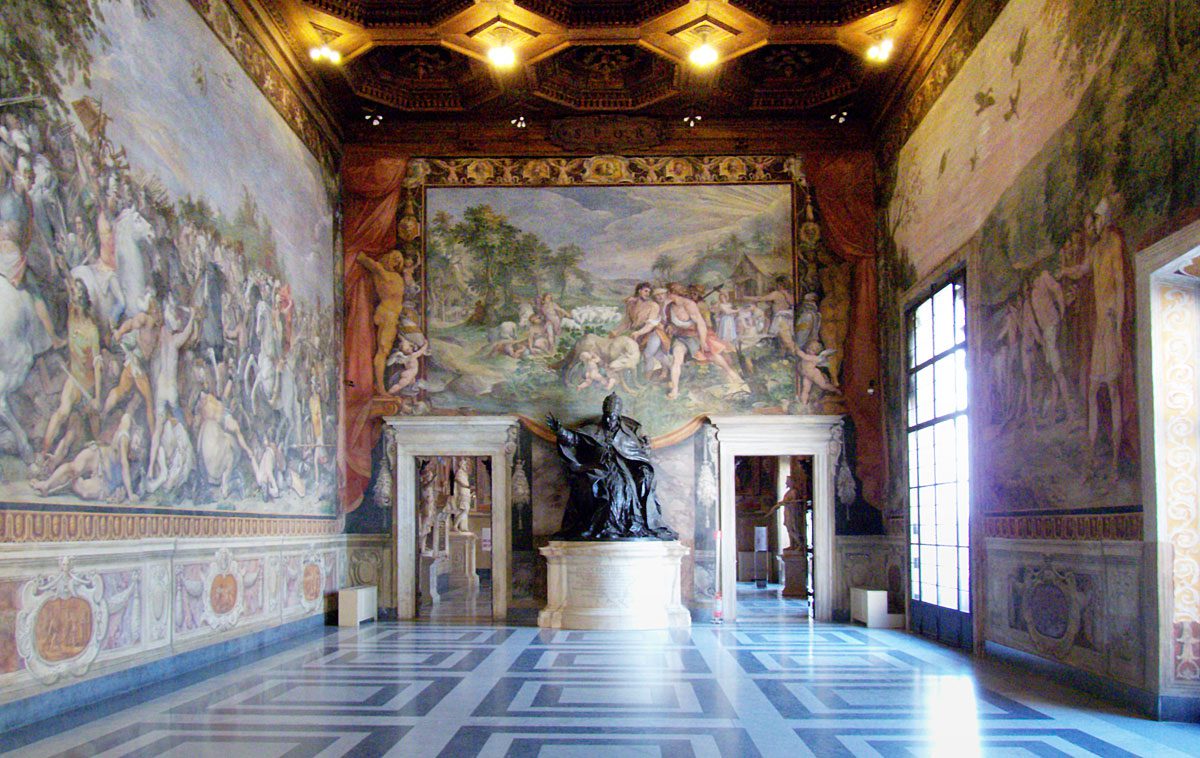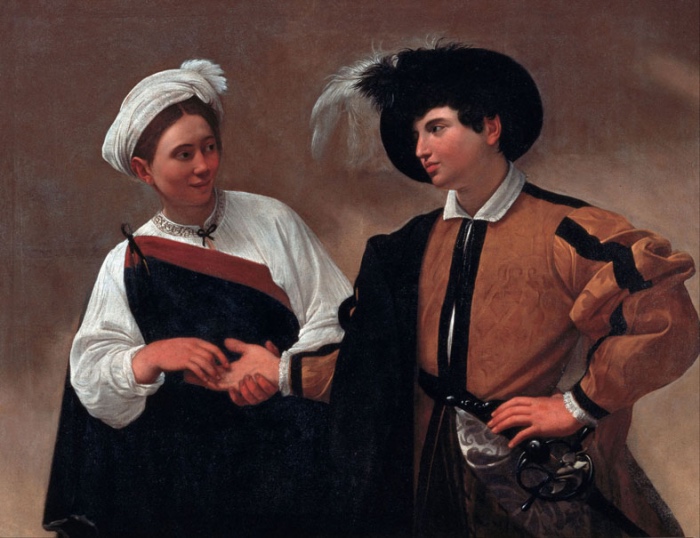

The millenary history of the Eternal City can be seen not only by strolling through the streets of the historic centre – in itself an open-air museum – but also by entering the museums of Rome, which are numerous and scattered throughout the city. From the best known and oldest, such as the Vatican Museums, the Palatine Gallery or the Capitoline Museums, to the smaller and lesser known ones. These include the Museum of Rome in Palazzo Braschi, created in 1930 out of the Museum of the Empire and now housing more than 120,000 objects including works of art, documents, photographs and prints, or the Napoleonic Museum, a testimony to the relationship between the Bonaparte family and Rome, born from the collection of Giuseppe Primoli, a descendant of Napoleon Bonaparte.
The works in the Capitoline Museums

Michelangelo Merisi da Caravaggio
La Buona Ventura, 1597
Olio su tela, 115 x 150 cm
Musei Capitolini-Pinacoteca Capitolina, Roma
Roma, Musei Capitolini – Pinacoteca Capitolina
The works in the Capitoline Museums range from Antiquity to modern times. These include the original equestrian statue of Marcus Aurelius, which stood in the Piazza del Campidoglio and was replaced there by a copy. Also part of the collection are imperial portraits such as the colossal head of Constantine (313-324 AD), the Capitoline Venus (4th century BC) and the Spinarius (1st century BC). But one of the best known works preserved in the Capitoline Museums is undoubtedly the Capitoline She-wolf (5th century BC), a bronze sculpture that recalls the mythological origins of the city: Romulus and Remus suckled by a she-wolf.
The birth of the Capitoline Museums, the oldest museum in the world, dates back to Sixtus IV’s donation to the Roman people of a group of ancient bronze sculptures in 1471, including the Capitoline She-wolf and the colossal head of Constantine.
More recent works on display in the four buildings that make up the Capitoline Museums include Gian Lorenzo Bernini’s bust of Medusa (1644-1648) and two oil paintings by Caravaggio.
Caravaggio at the Capitoline Museums
The artist’s relationship with Rome was fundamental to the history of Italian art and the city still bears the traces of his passage and his relations with members of the aristocracy and the Church. There are two works by Caravaggio in the Capitoline Museums and they well represent the liveliness of his artistic expression.
On the one hand, we find a religious subject, ‘Saint John the Baptist’ (1602) – although it has recently been questioned whether he is simply a pagan youth. On the other hand, the ‘Good Fortune’ (1596-1597) depicts a scene of everyday life that was quite common in the Roman streets of the period: a gypsy girl who, under the pretext of reading the hand of a young man of good family, steals a ring from his hand.
Online tickets for the Capitoline Museums
Online tickets for the Capitoline Museums allow you to visit this huge, ancient museum complex located on the Capitol and the temporary exhibitions it hosts.
The museum is open daily from 9.30 a.m. to 7.30 p.m. and the visit is also suitable for wheelchair users. Children up to the age of five enter free of charge and are not allowed to bring food, drinks, animals or large bags inside. Cancellation and rescheduling of the visit can be made by 23:59 on the day before the day selected at the time of purchase.
There is also the possibility of purchasing a ticket that offers the opportunity to watch a 25-minute multimedia video with information on the history and works present, while the audio guide for smartphones on the city of Rome will allow you to discover curiosities on more than 150 places of interest in the city. The ticket must be redeemed at the Touristation office in front of the Victor Emmanuel monument and, in case of changes in the programme, the reservation can be cancelled up to 24 hours before the visit.
Combined ticket Capitoline Museums and hop-on hop-off boat
With a combined ticket for the Capitoline Museums and a boat tour, in addition to a visit to the world’s first museum, you can relax as you glide along the Tiber among the wonders of the capital. The boat tour includes an audio guide and you can choose between two options:
- full one-hour tour;
- ticket valid for 24 hours, which allows you to get on and off the boat, stopping at places of interest.
The boats run every thirty minutes or so and, like the hop-on hop-off bus tours of Rome, once you have made your stop you can get back on and continue the tour, which includes five stops:
- Isola Tiberina
- Ponte Sant’Angelo
- Castel Sant’Angelo
- Palazzo di Giustizia
- Piazza del Popolo
The service is available daily from 10 a.m. to 6.30 p.m. and cannot be refunded if cancelled or rescheduled.
How to get to the Capitoline Museums
Located on the Capitol Hill, the Capitoline Museums are easily reached on foot from the Colosseum, walking about ten minutes along the Roman Forum.
If you are in another area, you can get to the Capitoline Museums by metro B (the stop is still the Colosseum), by some trains (FC2, FC3, FL5) and by several buses, getting off at the Fori Imperiali/Campidoglio stop.

